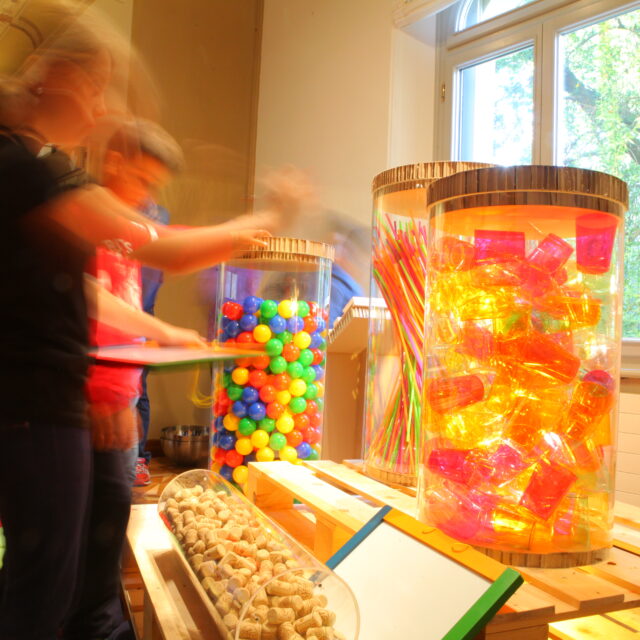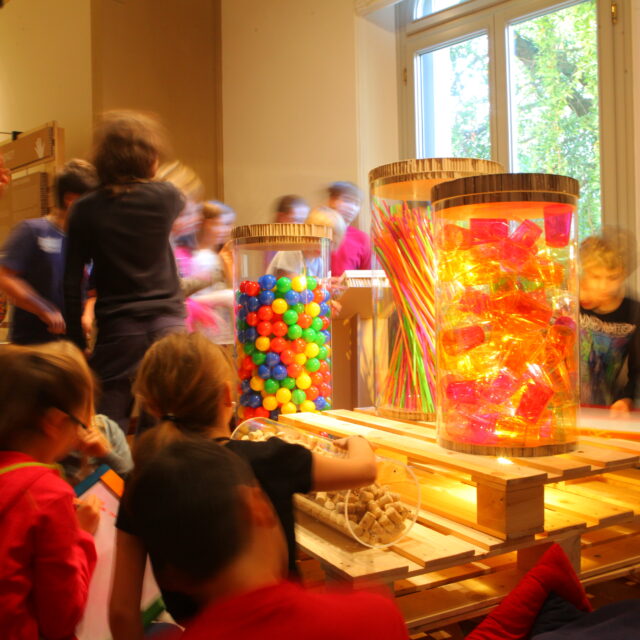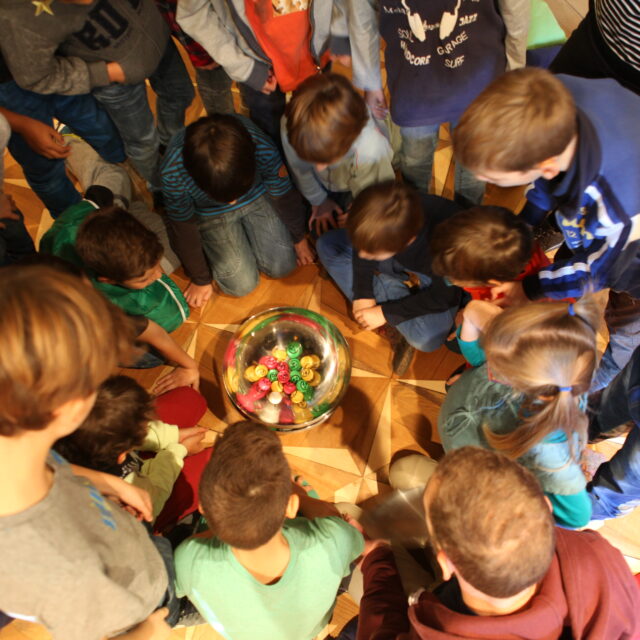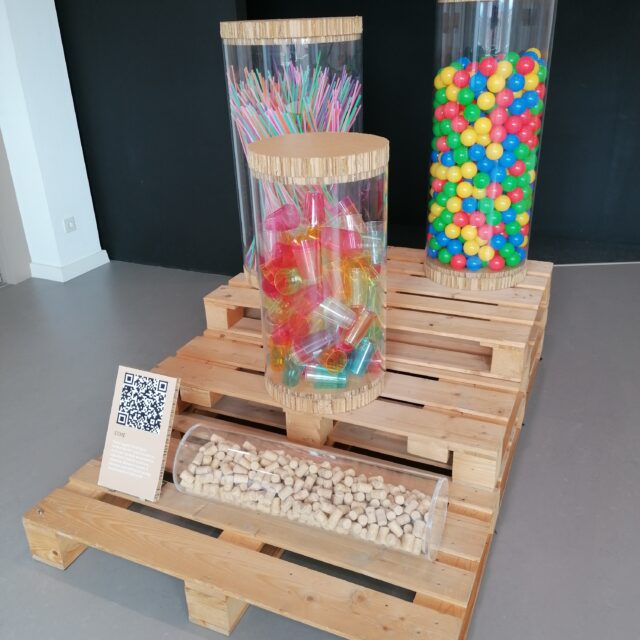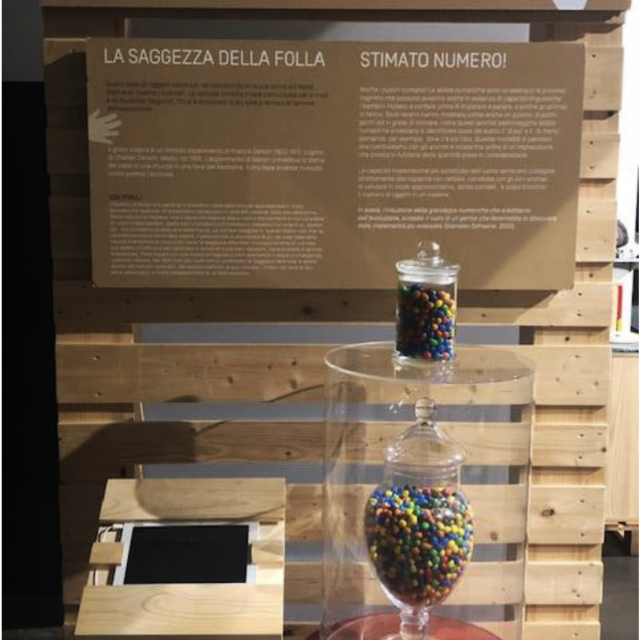Warning: This exhibit, actually, can be in either the Dice or Digits section since the idea is to count how many objects are in the plexiglass containers but in fact it is difficult to count them so they are estimated.
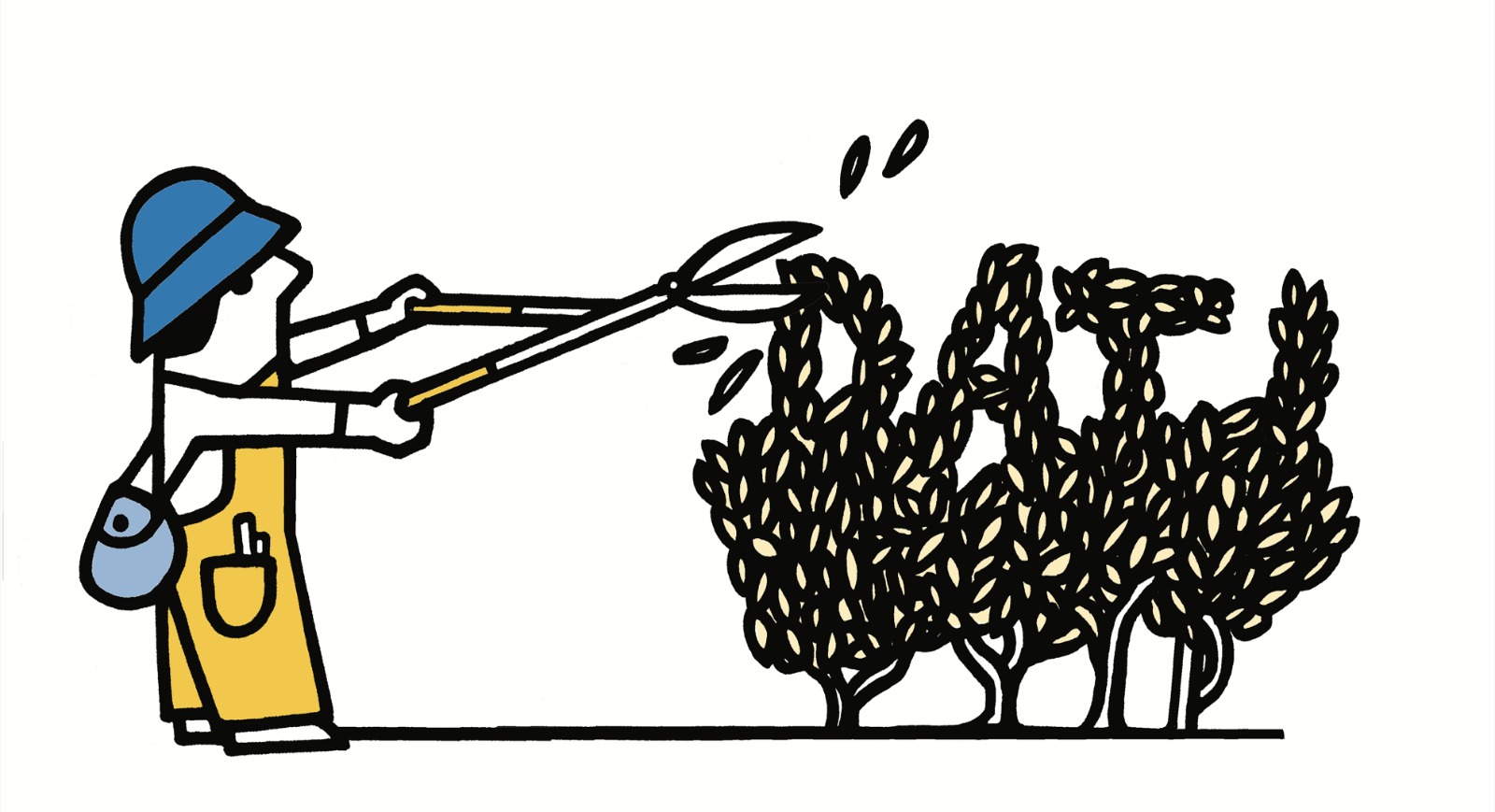
In the Numbed by numbers exhibit, two exhibits had been created, one with a glass jar filled with candy, in which people were asked to make an estimate of the candy by entering the estimate into a tablet; in this case, the exhibit was paired with a contest in which prizes were awarded to those who came closest.
A second exhibit, placed at the beginning of the exhibit, involved 4 plexiglass cylinders with different objects inside (glasses, straws, caps, and colored spheres), again asked to enter the estimate into a tablet (the pages and files for editing them can be found attached here).
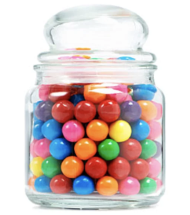
How to play
In 1906, anthropologist and statistician Francis Galton, cousin of the famous Charles Darwin, asked the audience at a cattle fair to estimate the weight of an ox. He collected all the estimates and noticed that the median — put all the values in ascending order, the median being the middle value — of the answers given by the crowd came closer to reality than the answers given individually by the experts present. In mathematical terms, the median of a data set corresponds to the value that lies exactly in the middle in the ordered sequence of data.
See Galton’s article below

Teaching links: Basics of statistics (average, median, mode)
> Che cos’è la MEDIANA (ITA)
> Was ist der MEDIAN (DE)
> Quelle est la MÉDIANE (FRA)
> What is MEDIAN (ENG)
The first activity we recommend, especially with children, is to come up with an estimation exercise on small quantities of objects (balls in a bowl), asking them to take a quick look at the balls and say how many there are (see photo in the gallery). By doing this simple exercise we realize that up to small quantities we can tell the exact number of objects, beyond a certain number we have to make estimates. In the quality of our estimates other factors then take over, such as the type of objects, or the type of ditribution in space. We recommend starting with a discussion of these aspects, and then talking about how and whether other animals also count, and, with older ones, the evolutionary advantage in knowing how to do so.
The crowd wisdom theory finds great application on the Internet and especially on sites such as Yahoo! Answers and Wikipedia, which base their operation on it and rely on the content generated by the large number of visitors.
Very different (and useful!) uses of the “wisdom of the crowd.” The basic idea is that even non-experts can contribute to real ongoing research. The large number of people involved makes it a great resource of potentially useful statistical data.
The following project proposes games based on open problems, e.g., quantum physics, with the intention of collecting data from users’ game sessions to carry on real scientific research:
> https://www.scienceathome.org/
Like the previous one, but without the game guise. Users can easily contribute to scientific or public benefit studies (such as highlighting on satellite images damaged areas after the recent earthquake in Ecuador):
> https://www.zooniverse.org/
Web page for tablet:
Web page to be uploaded to tablet for estimating quantities contained in plexiglass cylinders. It is possible to download the html files and associated database and modify them, in language and number of objects (see instructions below and link DATABASE).
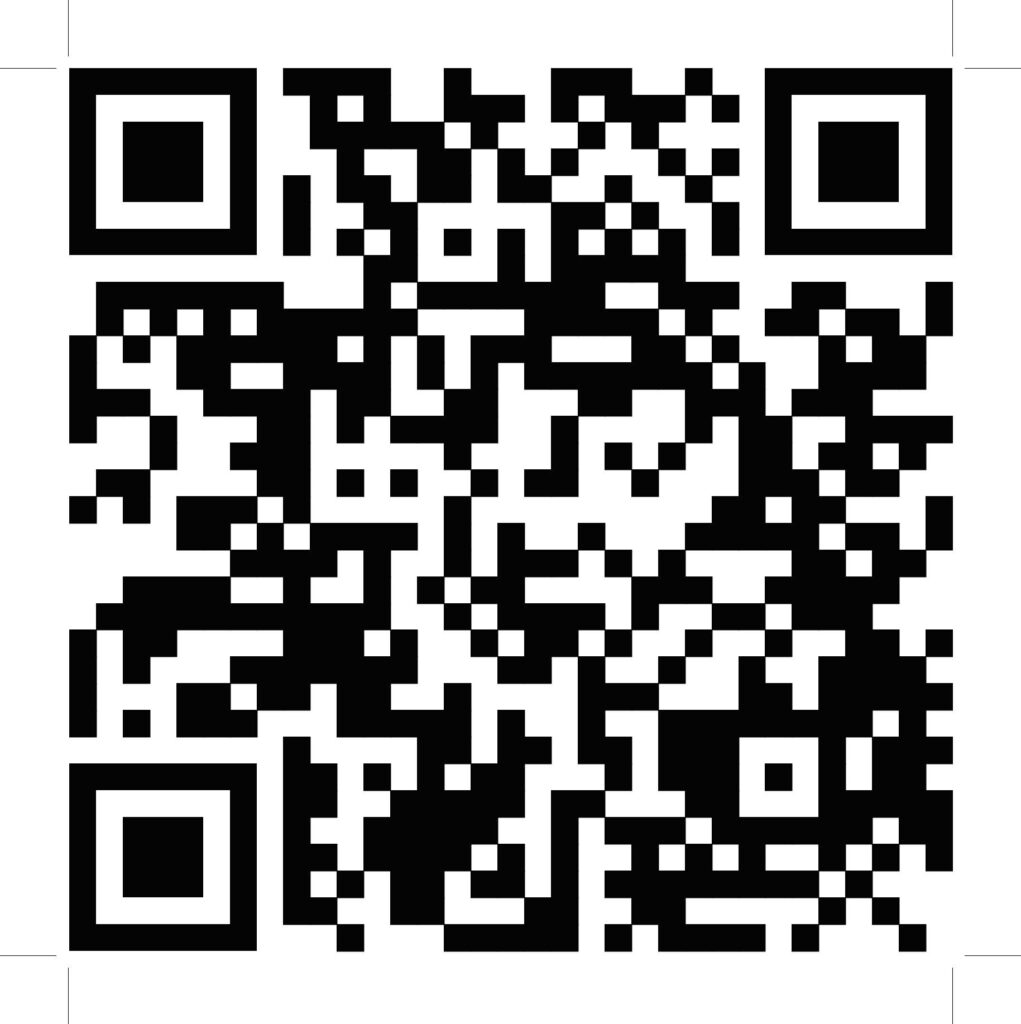
The wisdom of crowd

Estimate
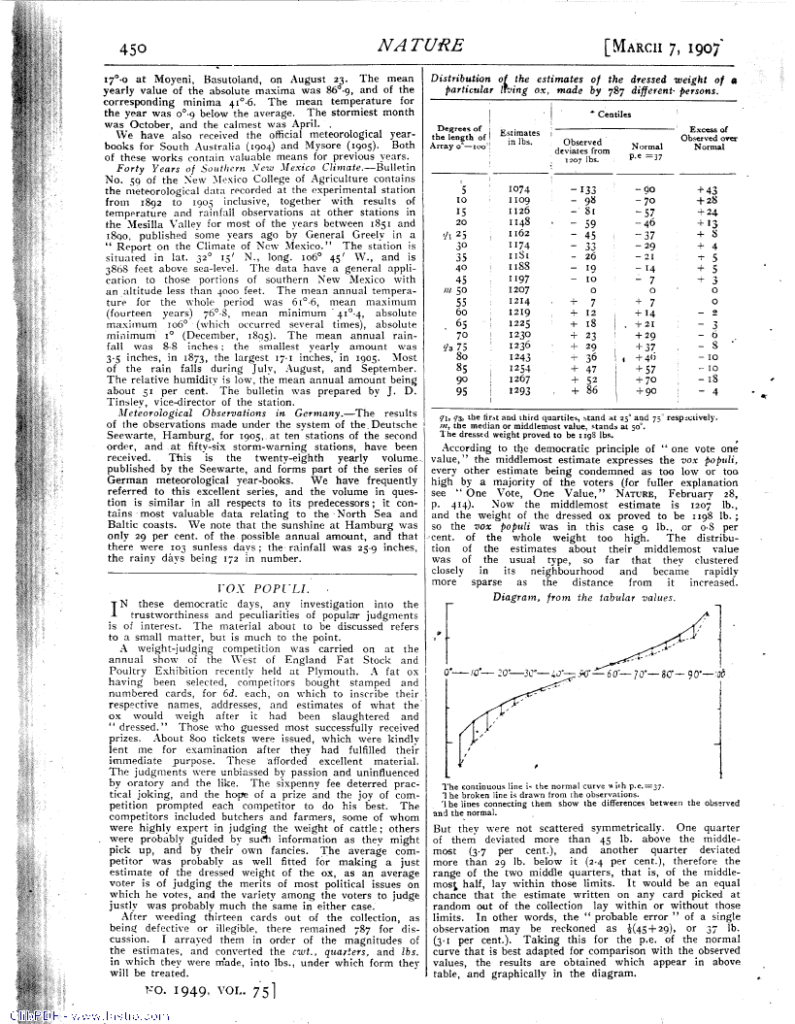
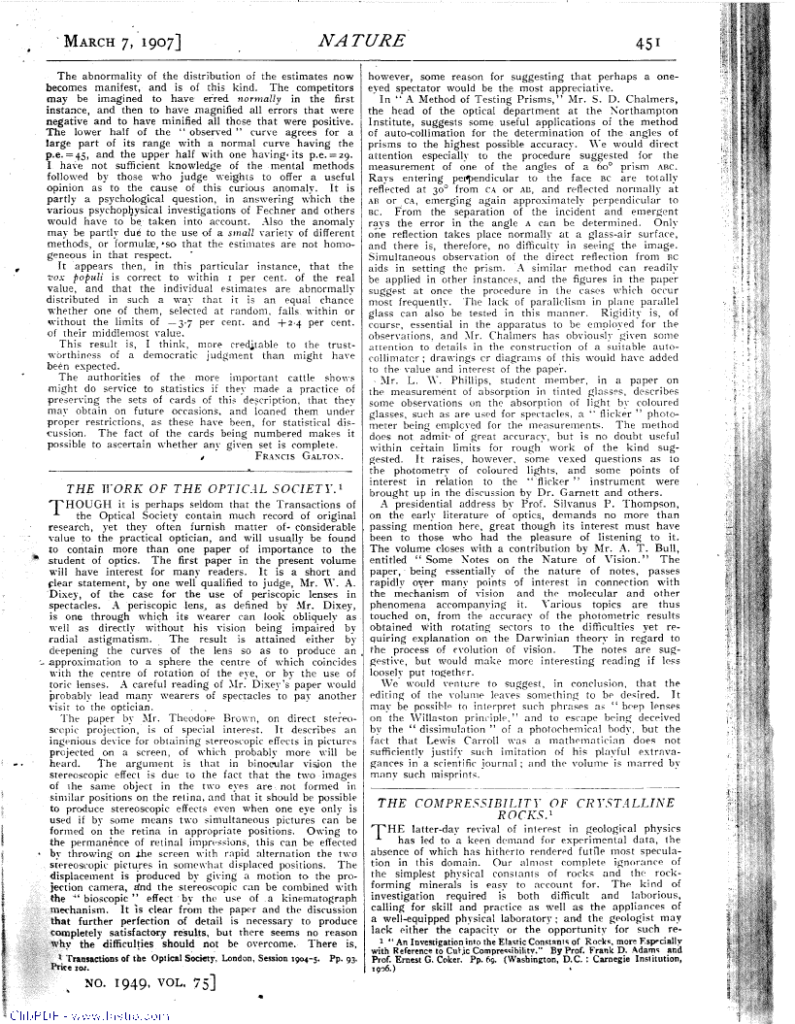
Galton, F. (1907) Vox Populi. Nature, 75, 450-451.
https://doi.org/10.1038/075450a0
EXHIBIT MATERIAL:
- n. 1 Vertical pallet 120×200 cm
- n. 1 Base pallet 120×80 cm.
- MDF and cardboard stand for tablet or alternatively stand for QR CODE (TAG) with web page link.
- n. 2 marker (QR code) 15×15 cm on cardboard base.
- Pallets of various sizes as a base (as desired) and plexiglass cylinders of various sizes used as containers for various materials to be estimated. Instead of tablet can be replaced with QR code arranged on card- board base
- Honeycomb cardboard cylinders with red MDF top.
- A glass jar.
- Title (120×20 cm)
- n.1 honeycomb cardboard panels with explanation “Wisdom of the crowd”(100×50 cm).
CLICK AND DOWNLOAD PRINT-READY .PDF FILES:
QR code “The wisdom of crowd”
QR code “Estimate”
QR PANEL “The wisdom of crowd”(FRA)
QR PANEL “The wisdom of crowd”(ITA)
QR PANEL “Estimate” 20×35 cm (FRA)
QR PANEL “Estimate” 20×35 cm (ITA)
CARDBOARD PANEL 100X50 cm (FRA)
CARDBOARD PANEL 100×50 cm (ITA)
CARDBOARD TITLE 100×20 cm (ITA)
CARDBOARD TITLE 100×20 cm (FRA)
WEB/TABLET “The wisdom of crowd”
WEB/TABLET “Estimate”
Link DATABASE stime // To change number of objects in plexiglass containers and reset values entered by visitors.
